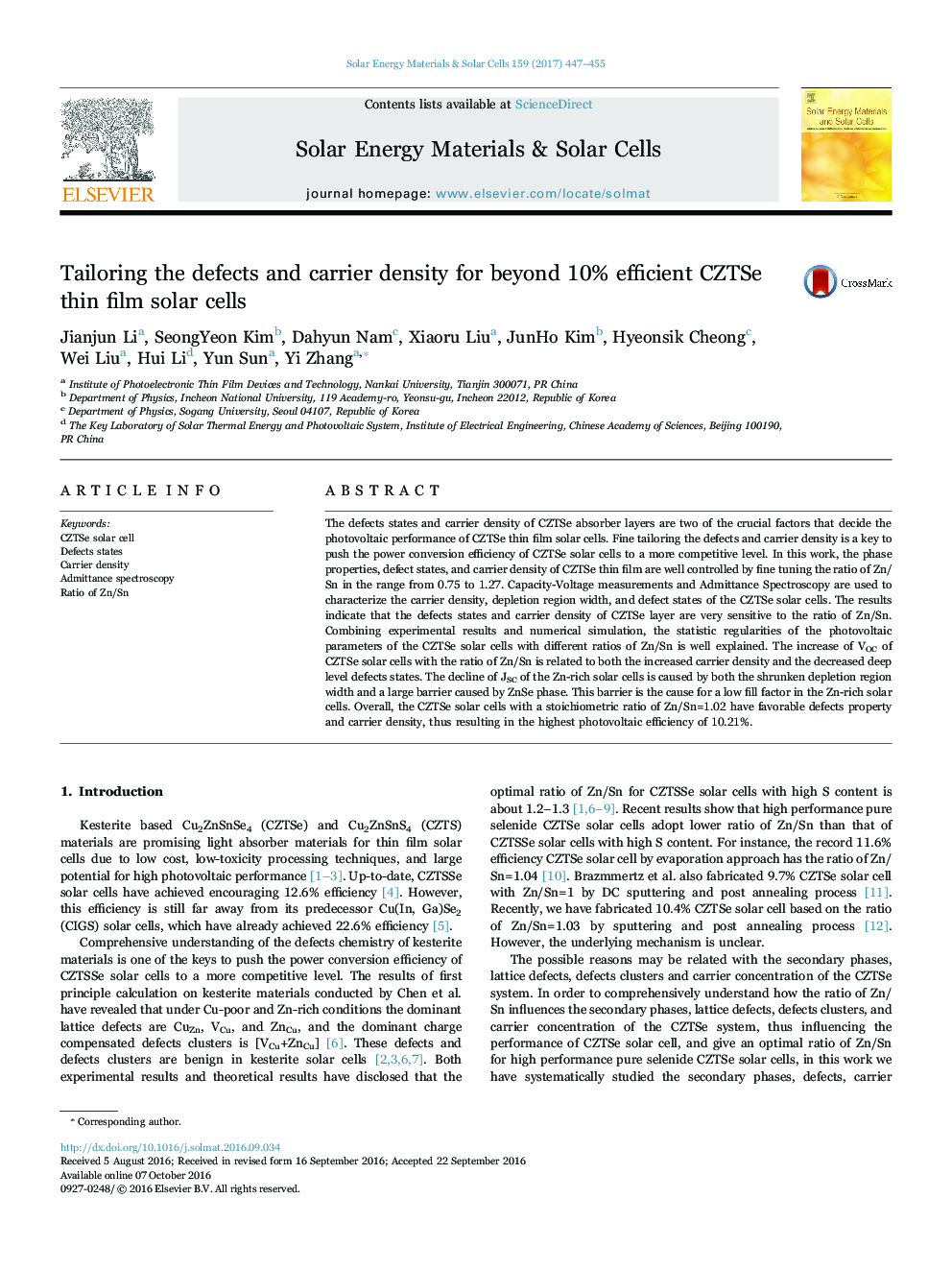| کد مقاله | کد نشریه | سال انتشار | مقاله انگلیسی | نسخه تمام متن |
|---|---|---|---|---|
| 6457552 | 1420664 | 2017 | 9 صفحه PDF | دانلود رایگان |

- The defects and carrier density can be tailored by fine tuning the ratio of Zn/Sn.
- The carrier density of CZTSe solar cells increases with the ratio of Zn/Sn.
- High density of deep level defects exists in Zn-poor CZTSe solar cells.
- The optimal ratio of Zn/Sn for CZTSe solar cells is close to 1.0.
- The best CZTSe solar cell achieves 10.2% efficiency with Zn/Sn=1.02.
The defects states and carrier density of CZTSe absorber layers are two of the crucial factors that decide the photovoltaic performance of CZTSe thin film solar cells. Fine tailoring the defects and carrier density is a key to push the power conversion efficiency of CZTSe solar cells to a more competitive level. In this work, the phase properties, defect states, and carrier density of CZTSe thin film are well controlled by fine tuning the ratio of Zn/Sn in the range from 0.75 to 1.27. Capacity-Voltage measurements and Admittance Spectroscopy are used to characterize the carrier density, depletion region width, and defect states of the CZTSe solar cells. The results indicate that the defects states and carrier density of CZTSe layer are very sensitive to the ratio of Zn/Sn. Combining experimental results and numerical simulation, the statistic regularities of the photovoltaic parameters of the CZTSe solar cells with different ratios of Zn/Sn is well explained. The increase of VOC of CZTSe solar cells with the ratio of Zn/Sn is related to both the increased carrier density and the decreased deep level defects states. The decline of JSC of the Zn-rich solar cells is caused by both the shrunken depletion region width and a large barrier caused by ZnSe phase. This barrier is the cause for a low fill factor in the Zn-rich solar cells. Overall, the CZTSe solar cells with a stoichiometric ratio of Zn/Sn=1.02 have favorable defects property and carrier density, thus resulting in the highest photovoltaic efficiency of 10.21%.
261
Journal: Solar Energy Materials and Solar Cells - Volume 159, January 2017, Pages 447-455